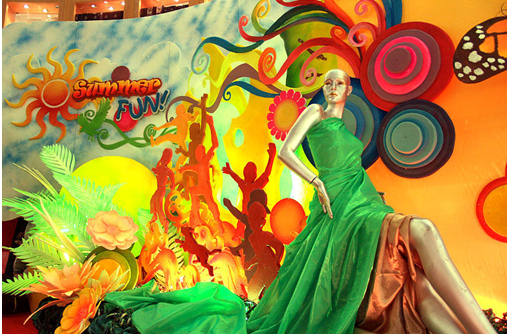With marketing, there really is more than what meets the eye. It is no good simply displaying products at the front of your store in the hope that customers will flood in, you must help the customers to find what it is they want or need, all the while encouraging more spending.

This is called Visual Merchandising, a process that helps you as the seller to find the optimum layout and product placement to hit those top numbers. SeeWorld Skills for more information on Visual Merchandising.
What is Visual Merchandising?
Visual Merchandising is the practice of designing your store’s floor layout, shelving structures and product displays to draw in the most customers and maximise your sale potential. The idea of this methodology is to provide the best shopping experience for customers, based on observations of how they behave whilst browsing your store.
How to Translate Customer Habits
When working on Visual Merchandising, a business should consider its brand image and its customers’ purchasing habits, being sure not to stray from its main purpose yet determining where its focus should be directed. Though it can be hard to understand customer tendencies through offline channels, as in-store, it is far easier to map audience members’ journeys on websites using integrated technology.

For assistance with Visual Merchandising strategies such as installing in store media to attract attention, you can contact specialists likehttps://moodmedia.co.uk/in-store-media/, who can help you to target content in more dynamic ways with the use of a range of interactive devices.
How Layouts Can Improve Sales
There are various styles of layouts that you can choose to recreate in your store – straight store layouts (which give maximum space on the floor to display merchandise and adopt defined focal points), angular store layouts (which mix display types and take up more floor space while offering aesthetically-pleasing focal points), and loop floor plans (which combine display units, setting a pathway out of shelving).
The first is typical of a supermarket or convenience store, while the second is commonly used in jewellery shops or fashion boutiques. The final Visual Merchandising tactic is often found in places like duty free shops at airports, where they want the customers to loop through the array of products and entice them to make impulse purchases.





Leave a Reply